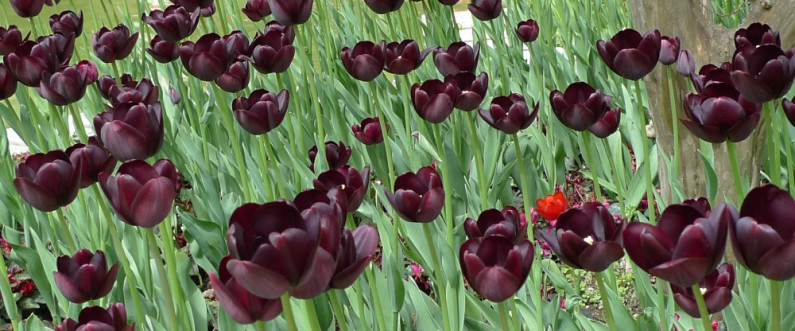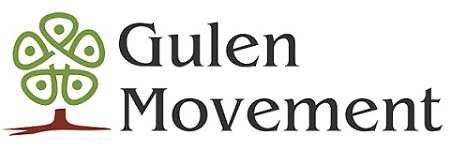
Sanaa El-Banna
Fethullah Gülen was born in 1941, in a small village near Erzurum, in eastern Turkey, an area known for its conservative culture and Sufi traditions, and described by Gülen as a village where poverty, scarcity, and drought was prevalent. He completed his early secular education at primary school. However, his further formal schooling was prevented by his father’s appointment as an imam in a different province where, because of distance, secondary education was not then accessible to him. He received instead informal education from his parents and the scholars of his town, and was introduced to Risale-i Nur through Nursi’s students. Gülen remembers that his first teacher was his mother, a Qur’an teacher in the village, who trained him in correct Qur’anic recitation. His father, Ramiz Efendi, was an imam with close connections to the Nakshibendi tarikat in Erzurum. He taught Gülen both Persian and Arabic, and gave him entrée to the world of Islamic thinkers such as al-Hasan al-Basri, Harith al-Mu- hasibi, al-Ghazali, Jelaluddin Rumi, Ahmed Faruk Sirhindi, Shah Wali Allah al-Dihlawi. Gülen later came under the tutelage of (Alvarli) Muhammad Lütfi Efendi, a member in the Kadiri Sufi order who, according to Gülen, greatly influenced his intellectual development.
In fact, the Nakshibendi background of his tutors is especially important in the sense that it represents an influential “part of Turk- ish history, culture, economics, politics, and individual identity for several centuries (…) and a repository of virtually all cultural and religious traditions that have existed in Turkey.” While this background explains the increasingly spiritual curve of his thought, manifest in his four-volume masterpiece, Key Concepts in the Practice of Sufism: the Emerald Hills of the Heart, Gülen never took part in a Sufi order (or tarikat) and strongly resists characterizing Hizmet as a tarikat or Sufi order centered around a shaykh. Indeed, he has often criticized the tarikats for cultivating individual passivity toward social responsibilities. Gülen, rather, envisages Sufism as the spirit of Islam, “a path followed by individuals for the pursuit of deeper understanding of the Qur’anic message.” Guided by the practice of the Prophet’s companions, it is the way that leads individuals to better engagement in their society through constituting role models of absolute self-sacrifice.
Gülen pursued his secular education in positive sciences, literature, history and philosophy through informal self-education. During his military service, his commander recommended a number of major thinkers for his reading. Among the writers whose work he encountered this way were Hugo, de Balzac, Kant, Shakespeare and Einstein, and French existentialist philosophers such as Sartre and Camus, as well as Marcuse’s critique of modernity and Shakespeare’s plays. With this background, he would later develop his thoughts on reconciling modernity and spirituality through Islamic values.
Gülen’s rural and Anatolian background also draws attention to “Anatolian Muslimness” as a major input in his formation. Anatolian Muslimness, (1) described in terms of cultural and liturgical practices, is characterized by: (i) mediation, mainly between the meaning of the Arabic Scripture and Turkish-speaking Muslims, ii) mürşid/guide centrality, and (iii) rootedness in regional and ascetic ideals as cultivated through the work of classical poets such as Alvarlı, Mehmet Akif, Necip Fazıl, Erol Güngör, Sezai Karakoç and other Turkish poets. This input helps to explain how Gülen has such a strong influence on the general public through his sermons, poetry and writings.
Ottoman history shows in Gülen’s background through his assertion that Ottomans modeled Islamic values through their spirit of dialogue; their multilingual, multi-ethnic and multi-religious society; their respect for women; and the cultural rapprochement between Ottoman society and the West during the nineteenth century. In addition to the Millet system of the Ottoman rule, mutual recognition of the different segments of society was also inculcated by the traditional Sufi Masters that are repeatedly cited in his writings, such as Yunus Emre, Ahmed Yesevi, Haji Bayram-i Veli, and Akşemseddin (the Sufi master of Sultan Mehmet the Conqueror). In some of his articles, Gülen vividly describes the Ottoman civilization as one with qualities of “the mind, heart, and spirit.”
While sociologist Elisabeth Özdalga defines three reference points for Gülen’s thought—Sunni Islam, Nakshibendi Sufi traditions, and the Nurculuk movement — his biography suggests a wider input space in addition to his experience as an official preacher since the 1960s. In this regard, Skinner underlines a number of factors that help to identify wider input spaces and that better explain the momentous spread of an intellectual’s ideas around the world: “what the intellectual was doing” in writing his text, what question he is addressing, and how he utilizes the concepts available to him. The following paragraphs provide a more rounded grasp of Gülen’s thought through examining these factors.
In 1960, Gülen was granted official status as a preacher of the Turkish Directorate of Religious Affairs. Throughout the 1960s and 1970s, he held posts in Edırne, Kırklareli, and İzmir and the Aegean region. At the same time as providing a fairly broad exposure to the different sub-cultural and urban systems of modern Turkey, this experience also informed his discourse with both general and particular acquaintances among his audience. Moreover, Gülen preached in coffee shops, village gatherings, workplaces, and organized camps for students in middle and high school. The subjects of his sermons ranged from education, science, Darwinism, economy and social justice to more theological subjects of the Islamic faith, which later crystallized in his main argument: “our three greatest enemies are ignorance, poverty, and internal schism.”
With the spread of his ideas on education and charitable support for needy students, Gülen inspired the establishment of a bursary and student hostel system known as “lighthouses” (ışık evleri). Support was received from local working and middle-class groups, which set up study circles around the ideas of Gülen. By these means, Hizmet ethics started to spread steadily across the whole Anatolian region, where his supporters, then barely a hundred working class individuals, formed the core of what was later known as the Hizmet Movement.
The movement’s first university preparatory courses were established in 1974 in Manisa, where Gülen was posted at that time. Following the success of such initiatives, Gülen was called upon to preach in different parts of Turkey, where local communities were becoming enormously hopeful about the future of their children. Moreover, in 1979, Sızıntı started as a monthly journal, which, among other topics, expressed Gülen’s ideas about the reconciliation of faith with secular education, with the nation state, and with democracy. Gülen provided the editorial section from the beginning, elaborating on the relationship between Islam, Sufism and the meaning of faith in modern life.
In the 1980s Turkey, led by Turgut Özal, also witnessed an unprecedented economic and political liberalization that gave rise to a new class of technocrats, professionals, businessmen, and wealthy entrepreneurs, who combined religious conservatism with qualified education and profound orientation toward the Hizmet ethos as promoted by Gülen; this class found Gülen’s message acceptable due to his use of strong traditional Islamic arguments from the Qur’an and Sunnah (Kurani Makuliyet). In later decades this sector of society evolved into the “Anatolian bourgeoisie” that sets up and finances the Hizmet Movement’s schools and charitable organizations. With Özal’s new socio-economic policies, a “market friendly religio-education movement” started to gain organizational and institutional momentum. Gülen’s sermons during the 1980s drew large crowds of supporters, who also videotaped his lectures and broadcast and transcribed them for the larger population of conservative Turks.
The social and cultural constituency for Gülen’s ideas was further multiplied after the collapse of the former Soviet Union in the early 1990s, and the consequent liberation of many Turkic nations in the Central Asian and Balkan regions. The concepts of tolerance, human rights, education, and dialogue, which had hitherto comprised the themes of Gülen’s writings, became ideally suitable for his new listeners in the multi-ethnic Turkic societies.
In 1994, the Journalists and Writers Foundation was established. Since the late 1990s, the Journalists and Writers Foundation has been contributing to the diffusion of Hizmet strategies of consultation and consensus-building through the Abant Platforms. These annual forums have engaged a wide network of academicians, journalists and intellectuals from across the political spectrum in discussions about a national and/or international issue. At the end of each meeting the platform releases a statement, which has been reached by consensus.
Also in 1994, Gülen made visits to preach in Turkish mosques and community centers around the world, especially in the United States and European countries. Gülen-inspired schools, media enterprises, and business associations began to spread in the Balkan and Central Asian regions. Gülen also inspired the establishment of a chain of economic and media outlets, including the Association for Solidarity in Business Life (ISHAD) and the Businessmen’s Association for Freedom (HURSIAD) in 1993, and the Turkish Businessmen and Industrialists Confederation (TUSKON), all of which paved the way toward establishing schools and trade initiatives all over the world, and also created mutual interests between the movement and subsequent Turkish regimes.
Gülen’s positive views on inter-faith and inter-cultural dialogue had been expressed publicly as far back as 1998 with his visit to Pope John Paul II and continuously since that time. The 9/11 attacks on the United States gave further impetus to Hizmet’s dialogue work after the movement and its participants were recognized by Western policy makers as a potential means of promoting understanding and coexistence within Western societies—mainly between Muslim communities and the larger “indigenous” community. Hizmet further extended its model of “Sufi-type modern spirituality” to the post- 9/11 world and created an immensely active transnational network of dialogue NGOs and educational services in many areas of the world previously untouched by its work.
Note:
(1) The term refers to a type of Muslimness/Muslimhood that accommodates differences and institutionalizes co-existence in social, economic, and political institutions. It holds that the Anatolian region was exposed to many cultures, faiths and communities both before and during its Ottoman history. According to Gülen it has been able to preserve much of these cultural and religious traditions by escaping the European colonial complex. It therefore differs from other types of Muslimhood that grew in culturally homogeneous environments and envision a single straight norm of religiosity that reflects their social and historical settings.
Source:
Sanaa El-Banna, 2013. “Resource Mobilization in Gülen-Inspired Hizmet,” New York, Blue Dome Press. Pages, 21-27
Tags: Fethullah Gulen | Fethullah Gülen's life |Related Articles

A Case for Why Gulen Would Never Support a Coup
In his interview with the prominent French newspaper Le Monde, Gulen has called the July 15 events in Turkey a “terror coup.” As a man who has always…

Fethullah Gülen on Jihad
Basically the lesser jihad is to perform established religious duties while the greater one is to do them in a sincere and conscious manner. It is difficult to…

A Painful Prosecution, But Ultimately a Step Forward
James Harrington Political trials have run throughout the course of human history. Often ey have intertwined themselves with religious issues, especially when the powers of “church and state”…
